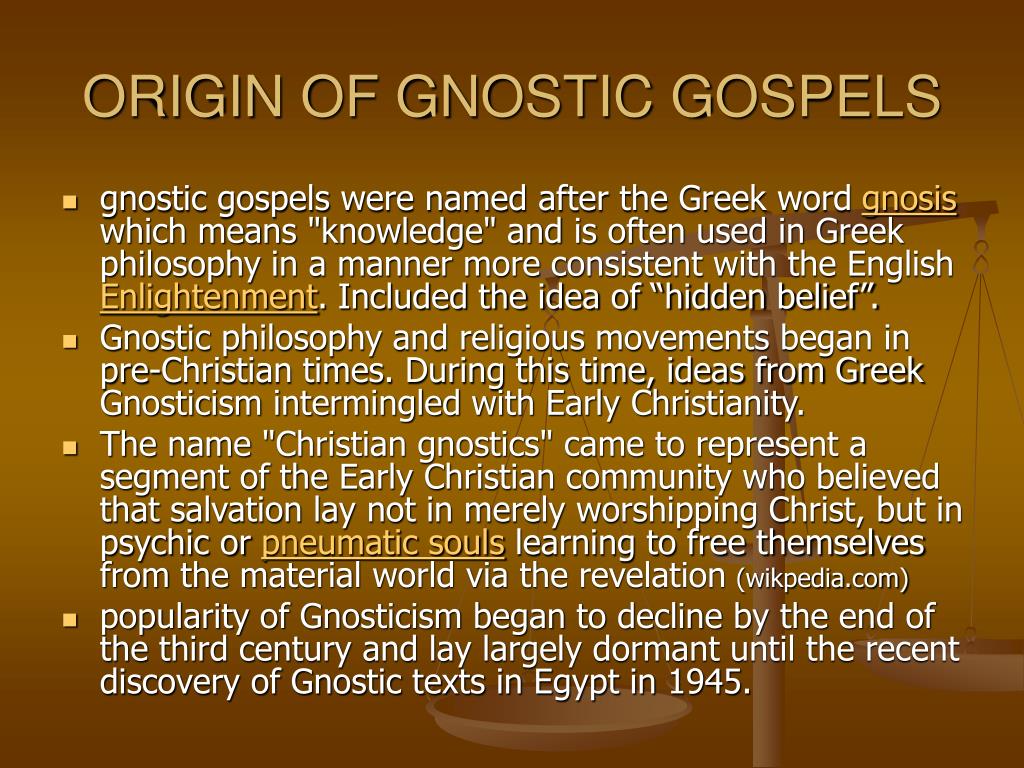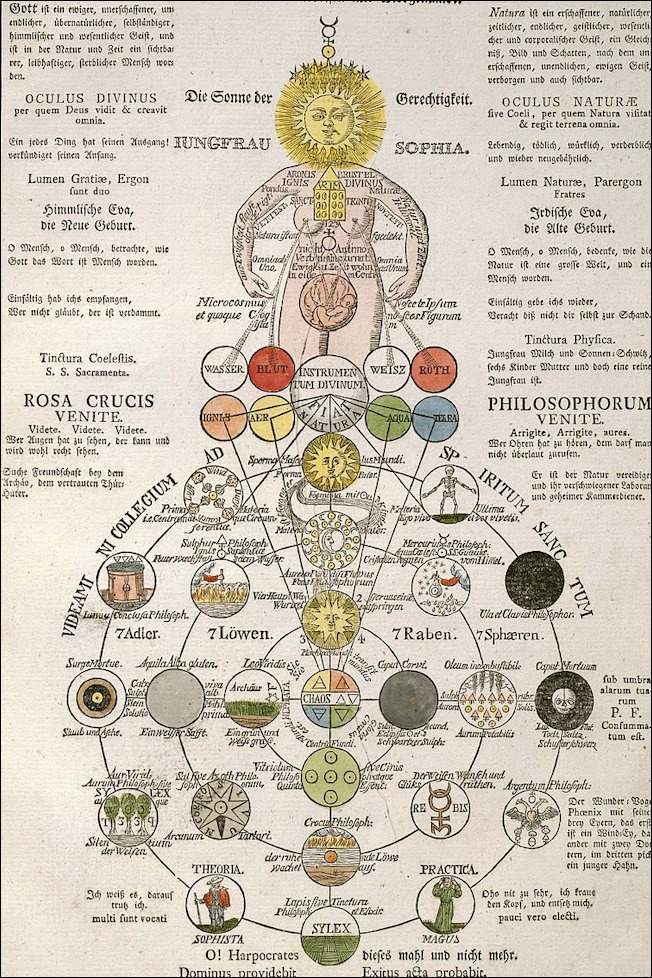Have you ever wondered about the many different paths early Christianity took, especially those that perhaps didn't make it into the history books we often read? As of late May 2024, there's still a deep curiosity about spiritual traditions that offer alternative views on faith and existence. One such fascinating, yet often misunderstood, movement is Gnostic Christianity. It presents a rather unique perspective on the world, God, and what it means to be human, quite different from what many people recognize as mainstream Christian belief.
For those interested in the rich, complex tapestry of religious history, exploring Gnostic Christianity can be a truly eye-opening experience. It's almost like discovering a hidden chamber in an old, familiar house, revealing ideas that once thrived alongside what became orthodox traditions. You see, these early Christian groups held beliefs that challenged the emerging norms, offering a distinct way to approach spiritual truth.
So, what exactly is Gnostic Christianity, and why does it continue to spark such intense discussion among scholars and spiritual seekers alike? It is a bit of a puzzle, certainly, yet its core ideas speak to universal human questions about purpose, suffering, and the divine. Understanding this ancient path can help us appreciate the incredible diversity of thought that existed in the first few centuries after Jesus.
Table of Contents
- The Roots of Gnostic Christianity: Where Did It Begin?
- Core Ideas of Gnostic Belief: A Different Kind of Faith
- Gnostic Texts: Voices from the Past
- Why Gnosticism Faded: The Rise of Orthodoxy
- Gnostic Ideas Today: Echoes in Modern Thought
The Roots of Gnostic Christianity: Where Did It Begin?
Gnostic Christianity, in a way, represents a collection of spiritual movements that emerged during the first few centuries of the Common Era. These groups were quite active across the Mediterranean, especially in places like Egypt, Syria, and Asia Minor. Their beliefs, you know, often mixed elements from various sources, including early Christian teachings, Greek philosophy, particularly Platonism, and even some Jewish mystical traditions.
It's interesting to consider that these movements arose at a time when Christianity itself was still taking shape, so there wasn't one single, agreed-upon "Christianity" yet. Different communities had different ideas about who Jesus was, what his message meant, and how salvation worked. Gnosticism was just one of these early, vibrant expressions, offering a distinct path for spiritual seekers. Basically, it was a period of intense theological creativity and debate.
The term "Gnostic" comes from the Greek word "gnosis," which means "knowledge." This isn't just any knowledge, though; it refers to a special, often secret, spiritual insight. This inner knowing, they believed, was the key to true salvation, setting them apart from those who relied on faith in doctrines or rituals alone. So, in some respects, it was a very personal and experiential approach to faith.
Core Ideas of Gnostic Belief: A Different Kind of Faith
The core ideas of Gnostic Christianity are quite distinct, offering a different picture of the divine and human existence. Whereas traditional Christianity often emphasizes faith, grace, and adherence to specific moral codes, Gnosticism really put the spotlight on personal, intuitive understanding. It's a rather profound shift in perspective, actually, and it leads to some very different conclusions about the world we live in.
Gnosis: The Special Knowing
At the very heart of Gnostic thought is the concept of "gnosis." This isn't intellectual knowledge gained from books or teachings, but rather a deep, spiritual realization, a kind of direct apprehension of divine truth. It's a knowing that transcends mere belief, a profound inner awakening. You might say it's about remembering who you truly are and where you truly come from.
This special knowledge, they believed, was not for everyone; it was for those who had the capacity to receive it, the spiritual insight to grasp it. It was, in a way, a revelation that came from within, or perhaps through a divine messenger. Through gnosis, individuals could come to understand their true spiritual nature and their connection to the ultimate divine source. This was, in their view, the path to true freedom.
The Problem of the Material World: A Flawed Creation
A central tenet in Gnostic belief is the idea that the material world, the physical universe we inhabit, is not a perfect creation. In fact, it's often seen as flawed, or even inherently evil. This stands in stark contrast to the traditional Judeo-Christian view, which holds that God created the world and saw that it was good. For Gnostics, this physical reality is a kind of prison for the divine spark within us.
They believed in a supreme, utterly perfect, and unknowable God, often called the Monad or the Pleroma, which is a fullness of divine being. This true God did not create the physical world. Instead, the material world was created by a lesser, often ignorant, or even malevolent deity known as the Demiurge. This Demiurge, you know, is sometimes identified with the God of the Old Testament, who is seen as harsh and limited. So, our world is, in some respects, a cosmic mistake.
Humanity's Spark: Divine Within
Within this flawed material world, Gnostics believed that certain human beings possessed a divine spark, a fragment of the true, supreme God. This spark, they felt, was trapped within the physical body, which was considered part of the Demiurge's imperfect creation. Our true self, therefore, is not our body or our ego, but this spiritual essence. This is a pretty significant idea, as it means we carry a piece of the divine within us, even if we are unaware of it.
The goal of Gnostic practice and belief was to awaken this divine spark through gnosis. By gaining this special knowledge, the individual could realize their true spiritual identity and, upon death, escape the cycles of the material world to return to the Pleroma, the true divine realm. It's almost like remembering your true home, you know, and finding the way back.
Jesus in Gnosticism: A Messenger, Not a Sacrifice
The figure of Jesus is certainly important in Gnostic Christianity, but his role is interpreted very differently from mainstream views. For Gnostics, Jesus was primarily a revealer of gnosis, a teacher who came to show humanity the way to spiritual liberation. He was seen as a messenger from the true God, sent to awaken the divine spark within people. He brought secret knowledge, a hidden wisdom, rather than a public doctrine.
Many Gnostic traditions held a belief called Docetism, which suggested that Jesus's physical body was not truly human, but rather an illusion or a spiritual apparition. They found it hard to believe that a divine being could truly suffer or die in a material body, which they considered impure. So, his suffering on the cross was not central to their idea of salvation; his teachings and his example of attaining gnosis were what truly mattered. This is a very different way of looking at the story, to be honest.
The Pleroma and Aeons: A Divine Hierarchy
To explain the vastness of the true divine realm, Gnostics often described a complex hierarchy of divine beings known as Aeons. These Aeons were emanations or projections from the ultimate, unknowable God, forming the Pleroma, which means "fullness." Think of it like a series of divine reflections, each one a little further from the original source. This is a rather intricate system, certainly.
One of the most significant Aeons is Sophia, or Wisdom. In many Gnostic myths, Sophia plays a key role in the creation of the material world. Often, her desire to know the unknowable God leads to a misstep or a fall, resulting in the accidental or misguided creation of the Demiurge, who then fashions our flawed world. This narrative, you know, offers a compelling explanation for the existence of evil and suffering, placing it outside the will of the supreme, perfect God. In consideration of these facts, it's a very different cosmology.
Gnostic Texts: Voices from the Past
For a very long time, our knowledge of Gnosticism came primarily from the writings of early Christian leaders who opposed it, labeling it as heresy. These early Church Fathers, like Irenaeus and Tertullian, wrote extensive criticisms, which, while biased, did preserve some details about Gnostic beliefs. However, our direct access to Gnostic thought changed dramatically with a truly remarkable discovery.
In 1945, near the town of Nag Hammadi in Egypt, a collection of ancient texts was found buried in a jar. This collection, now famously known as the Nag Hammadi Library, contained numerous Gnostic scriptures that had been hidden for centuries. This finding was a bit like opening a time capsule, offering direct insight into the minds of these early spiritual seekers. It was, quite literally, a treasure trove of ancient wisdom.
Among the texts in the Nag Hammadi Library are famous works like the Gospel of Thomas, which presents sayings attributed to
Related Resources:



Detail Author:
- Name : Katlyn Nitzsche
- Username : kavon13
- Email : anais98@gmail.com
- Birthdate : 1992-08-25
- Address : 555 Carli Spur Suite 403 Boganton, FL 85527
- Phone : +14246377701
- Company : Tillman-Langosh
- Job : Range Manager
- Bio : Soluta occaecati voluptatem et nam veritatis laborum. Non ex rerum et. Dignissimos voluptas sunt et dolor. Quo sit eum et illo ducimus provident inventore.
Socials
facebook:
- url : https://facebook.com/sanforde
- username : sanforde
- bio : Facilis totam aut ullam quibusdam ad ut a. Aut vitae et eligendi voluptas.
- followers : 1318
- following : 2635
tiktok:
- url : https://tiktok.com/@sanforde
- username : sanforde
- bio : Et eaque tenetur alias quia ut harum aspernatur.
- followers : 3615
- following : 2683
twitter:
- url : https://twitter.com/sanford1991
- username : sanford1991
- bio : Excepturi eveniet alias reiciendis et explicabo et. Nemo voluptas tenetur enim nihil. Quod hic adipisci veniam praesentium est voluptas eos.
- followers : 4848
- following : 1832
instagram:
- url : https://instagram.com/evie_id
- username : evie_id
- bio : Dolore laudantium sed aut tempora. Assumenda rerum molestiae dolorem voluptas.
- followers : 1699
- following : 691